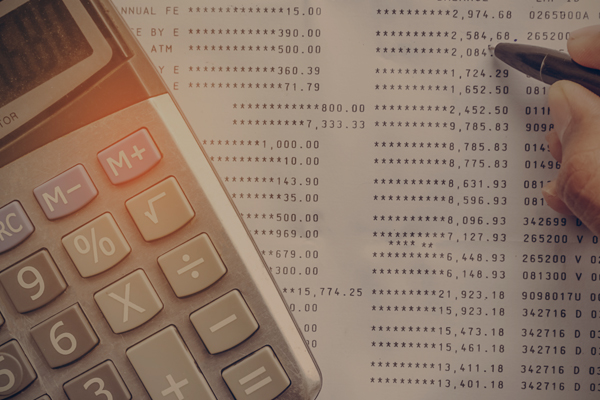


Saving to Start a Business
Most new businesses get started out of personal savings. The amount of money you will need to start yours depends on the initial outlay of funds you will need to get started, plus the number of months of ongoing expenses you will want to have saved in advance to pay your business expenses before the revenue from your operations can pay for them. Typical startup costs include such things as office furnishings, equipment needed to operate your business and your initial stock of inventory. Once the business is started, you will have continuous expenses that you will incur, such as employee salaries, rent, utilities, and many other costs particular to your business.
Saving to Start a Business
Most new businesses get started out of personal savings. The amount of money you will need to start yours depends on the initial outlay of funds you will need to get started, plus the number of months of ongoing expenses you will want to have saved in advance to pay your business expenses before the revenue from your operations can pay for them. Typical startup costs include such things as office furnishings, equipment needed to operate your business and your initial stock of inventory. Once the business is started, you will have continuous expenses that you will incur, such as employee salaries, rent, utilities, and many other costs particular to your business.
The Value of Your Business
While there are potentially many ways to value a business, one traditional method is using the discounted, or present value, of your estimated cash flow. This method takes your current income, before income, taxes, depreciation and amortization and projected income for a defined number of years and determines the present value of that income, based on the cost of capital. Some businesses are less valuable because of their marketability, and as a result, a discount is often applied to reflect the difficulties that may be encountered when trying to sell the business. Keep in mind that this method does not include the value of your companies assets, only its ability to produce income.
The Value of Your Business
While there are potentially many ways to value a business, one traditional method is using the discounted, or present value, of your estimated cash flow. This method takes your current income, before income, taxes, depreciation and amortization and projected income for a defined number of years and determines the present value of that income, based on the cost of capital. Some businesses are less valuable because of their marketability, and as a result, a discount is often applied to reflect the difficulties that may be encountered when trying to sell the business. Keep in mind that this method does not include the value of your companies assets, only its ability to produce income.
Sales Volume Required to Break Even
The break even point for a product or business is the point where sales revenue equals your fixed plus total variable costs. If you are below the break-even point, you are losing money. If you are above the break-even point, you are generating a profit. To break even, your sales revenue from each sale needs to exceed the variable costs of creating or delivering the product or service. The resulting gross margin can then be used to cover the fixed costs of your business. Once your fixed costs are covered, your business is at the break even point.
Sales Volume Required to Break Even
The break even point for a product or business is the point where sales revenue equals your fixed plus total variable costs. If you are below the break-even point, you are losing money. If you are above the break-even point, you are generating a profit. To break even, your sales revenue from each sale needs to exceed the variable costs of creating or delivering the product or service. The resulting gross margin can then be used to cover the fixed costs of your business. Once your fixed costs are covered, your business is at the break even point.
Business Inventory Requirements
Managing the inventory of a business is important. Having insufficient stock on hand can often result in lost sales and dissatisfied customers. However, having too much inventory on hand can be financially strenuous as your available cash is tied up in product that sits in your warehouse. Businesses that successfully manage their inventory keep enough on hand to satisfy demand and replenish that inventory just as their supply is running out. Firms that are seasonal in nature or that have fluctuating demand keep a 'safety stock' on hand to make sure they can accommodate unanticipated need.
Business Inventory Requirements
Managing the inventory of a business is important. Having insufficient stock on hand can often result in lost sales and dissatisfied customers. However, having too much inventory on hand can be financially strenuous as your available cash is tied up in product that sits in your warehouse. Businesses that successfully manage their inventory keep enough on hand to satisfy demand and replenish that inventory just as their supply is running out. Firms that are seasonal in nature or that have fluctuating demand keep a 'safety stock' on hand to make sure they can accommodate unanticipated need.
Determine Your Working Capital Requirements
Working capital is the amount you have remaining when current liabilities are subtracted from current assets. Whether a business has enough working capital is measured by the 'current ratio', or current assets divided by current liabilities. Generally, a current ratio of between 1.2 and 2 is considered the sign of a healthy business. If your current ratio is below 1.2, its an indicator that your business might have difficulties paying its bills. If it is above 2, its an indicator that your assets are not being put to their best use.
Determine Your Working Capital Requirements
Working capital is the amount you have remaining when current liabilities are subtracted from current assets. Whether a business has enough working capital is measured by the 'current ratio', or current assets divided by current liabilities. Generally, a current ratio of between 1.2 and 2 is considered the sign of a healthy business. If your current ratio is below 1.2, its an indicator that your business might have difficulties paying its bills. If it is above 2, its an indicator that your assets are not being put to their best use.
Gross Margin Analysis
The gross margin of a product is measured by subtracting the cost of goods sold from the selling price. The cost of goods sold includes all costs associated with producing the goods or services sold by a company. Gross margin percentage is obtained by dividing gross margin by sales revenue. Many companies offer multiple products, so properly understanding overall gross margin is often an exercise in understanding how various unit sales, price points and costs for each product or service contribute to the overall business.
Gross Margin Analysis
The gross margin of a product is measured by subtracting the cost of goods sold from the selling price. The cost of goods sold includes all costs associated with producing the goods or services sold by a company. Gross margin percentage is obtained by dividing gross margin by sales revenue. Many companies offer multiple products, so properly understanding overall gross margin is often an exercise in understanding how various unit sales, price points and costs for each product or service contribute to the overall business.
Accounts Receivable Analysis
Accounts receivable are monies owed to your business for goods or services delivered to a customer, but not yet received. Successful companies collect money that is owed to them in a timely and efficient manner. Having too much money tied up in receivables means you are not getting the cash to pay for the goods or services you have provided. Not extending credit may impact sales. The 'Receivables Turnover Ratio' measures a businesses effectiveness in extending credit and collecting the debt. The higher the ratio, the more efficient the business is in dealing with its receivables. The accounts receivable to sales ratio looks at the amount you have tied up in receivables in comparison to your same period sales. The Average Collection Period shows how long, on average, it takes for you to collect your debts.
Accounts Receivable Analysis
Accounts receivable are monies owed to your business for goods or services delivered to a customer, but not yet received. Successful companies collect money that is owed to them in a timely and efficient manner. Having too much money tied up in receivables means you are not getting the cash to pay for the goods or services you have provided. Not extending credit may impact sales. The 'Receivables Turnover Ratio' measures a businesses effectiveness in extending credit and collecting the debt. The higher the ratio, the more efficient the business is in dealing with its receivables. The accounts receivable to sales ratio looks at the amount you have tied up in receivables in comparison to your same period sales. The Average Collection Period shows how long, on average, it takes for you to collect your debts.
Total Employee Compensation Package
The cost of an employee is more than their salary. Hiring an employee often involves paying a portion of their social security, medicare and unemployment taxes. Many companies offer benefits regarding various insurance programs, where the company may pay a portion of the cost, contributions to retirement plans or pensions and other fringe benefits that add to the hiring cost. When looking at employee compensation, it is important to consider all of these expenses rather than just the direct salary.
Total Employee Compensation Package
The cost of an employee is more than their salary. Hiring an employee often involves paying a portion of their social security, medicare and unemployment taxes. Many companies offer benefits regarding various insurance programs, where the company may pay a portion of the cost, contributions to retirement plans or pensions and other fringe benefits that add to the hiring cost. When looking at employee compensation, it is important to consider all of these expenses rather than just the direct salary.











